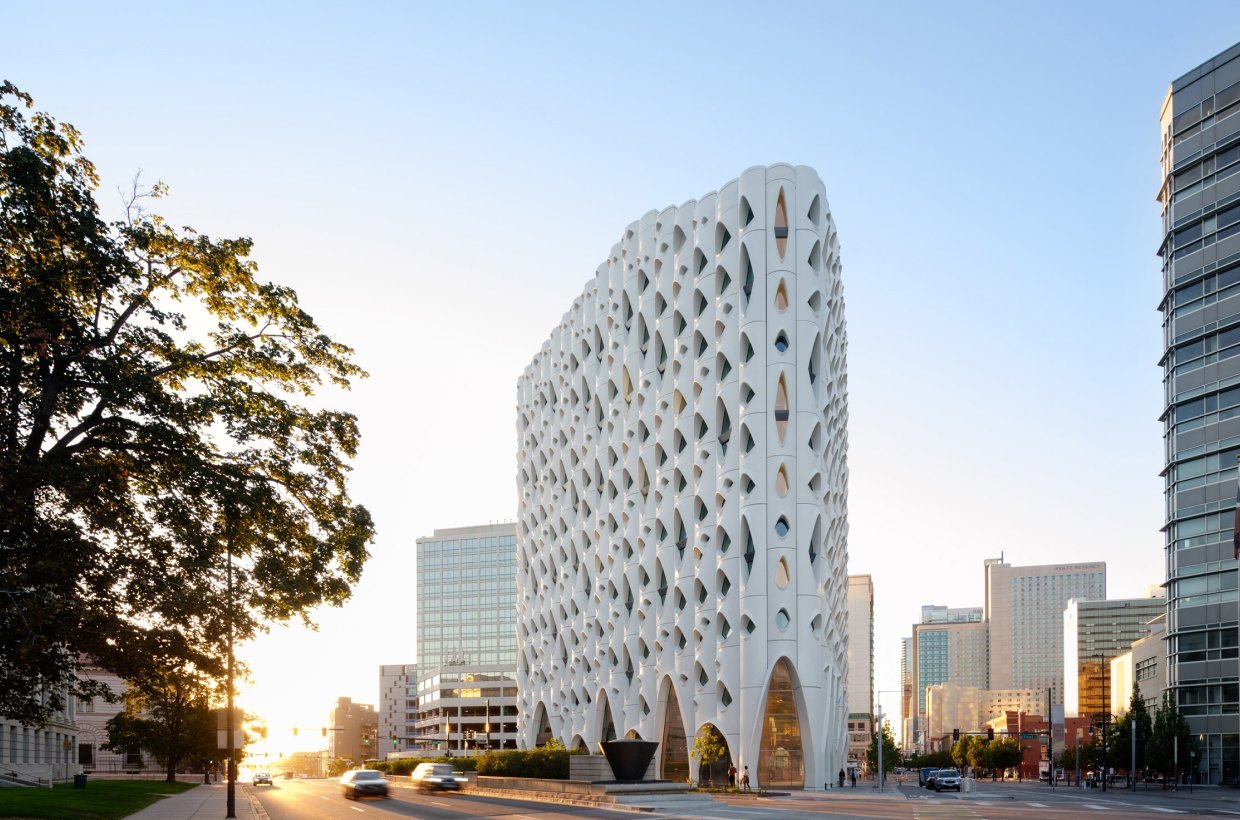
The first carbon-positive hotel in the USA: a hotel with "aspen eyes" was built in Denver
On its facade there are elliptical windows of different sizes. Above the windows there are special lids, similar to "upper eyelids", which shade the interior.
Architecture studio Gang has unveiled the first carbon-positive Populus hotel in the US, Dezeen reports.
The thirteen-story hotel is located in the center of Denver. On its facade there are elliptical windows of different sizes. They were designed so that the building reflected the "aspen eyes" of the local Populus Tremuloides tree. Above the windows there are special lids, similar to "upper eyelids", which shade the interior.

Elliptical windows of different sizes reflect the "aspen eyes" of a local tree. Photo: Jason O'Rear/
Above the windows there are special lids, similar to the "upper eyelids", which shade the interior. Photo: Jason O'Rear
A low-carbon concrete mix was used for the facade. It produces 30% less emissions than standard concrete. The team says the final carbon footprint is reduced through "the creation, transportation, installation, maintenance and disposal of materials." To reduce emissions to zero, the company also bought seven thousand metric tons of "carbon credits." A "carbon credit" is an electronic asset that authorizes emissions or confirms the reduction of emissions of a certain amount of greenhouse gases. One carbon credit equals one ton of emissions in CO2 equivalent.

In addition, the company cooperates with the US Forest Service, thanks to which it planted 70 thousand trees. As the company now offsets more than it creates carbon emissions, this makes Populus "the country's first carbon positive hotel".
The triangular Populus has 256 rooms, places for events, and a garden with an area of 12.5 thousand m2 has been arranged on the roof. The design used several methods to reduce energy consumption, including a green roof that was developed with landscape studio Superbloom.
Part of the internal structure was left open to reduce the need for cladding. Other parts of the building used recycled materials, including reclaimed Wyoming snow fences and reclaimed wood.
There are no parking spaces near the hotel, which further reduces the amount of carbon emissions. However, all this does not take into account the operational emissions of the hotel. A significant amount of energy is equally needed to heat, cool and maintain a building.
Back to the list







